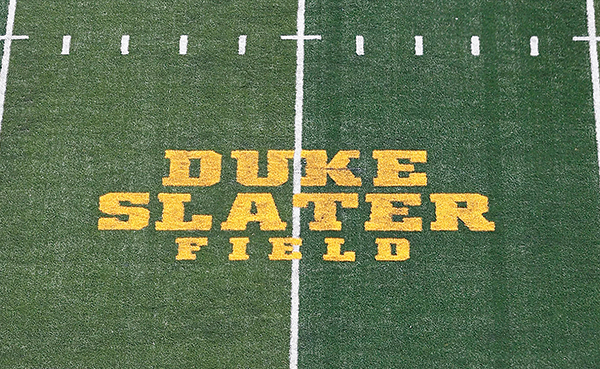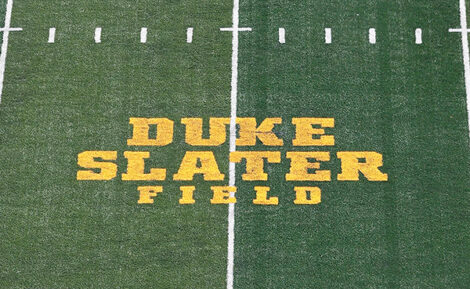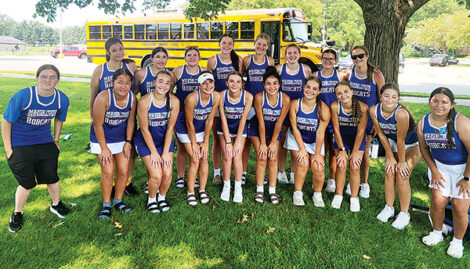Duke Slater Field emblem to be relocated at Kinnick Stadium

PHOTO PROVIDED BY UNIVERSITY OF IOWA ATHLETICS
IOWA CITY — The University of Iowa Athletics Department announced Monday that the Duke Slater Field emblem at Kinnick Stadium will be relocated ahead of the 2025 football season.
Originally installed prior to the 2021 season, the emblem currently sits at each 25-yard-line. It will now be moved to the north and south end zones of the field.
“We want to be clear that the field naming is not changing and will remain Duke Slater Field,” said Joe Parker, Iowa’s Deputy Athletics Director for Strategic Initiatives/Chief Operating Officer. “The NCAA approved the use of corporate logos on the field during regular-season games in the same location where we’ve proudly honored one of our greatest football legends. By relocating the recognition to the end zones, we preserve Slater’s legacy while also creating a new opportunity to generate revenue in support of our student-athletes.”
In addition to the field naming, Slater’s legacy is commemorated with a bronze relief outside the north end zone of Kinnick Stadium, depicting his pivotal block in Iowa’s 1921 victory over Notre Dame. Slater Residence Hall, located on the west side of campus, also bears his name.
A 6-foot-2, 210-pound tackle, Slater played for the Hawkeyes from 1918-21 and was the first Black student-athlete in school history to earn All-America honors. A three-time first-team All-Big Ten selection, he also competed in track and field. In 1921, he helped lead Iowa to a perfect 7-0 Big Ten record and a national championship recognition by multiple media outlets.
Slater made history as the first Black player inducted into the National Football Foundation College Hall of Fame in 1951. He was also enshrined in the Pro Football Hall of Fame as part of the Centennial Class of 2020 and was a charter member of both the National Iowa Varsity Club Hall of Fame and the Iowa Sports Hall of Fame.
A Clinton High School graduate, Slater helped Iowa to a 23-6-1 record during his collegiate career, including a landmark 10-7 win over Knute Rockne’s Notre Dame team in 1921, ending the Irish’s 20-game winning streak.
Slater went on to play 10 seasons in the NFL as a two-way tackle, becoming the league’s longest-tenured Black player of his era. He famously played all 60 minutes in the 1929 Thanksgiving Day game in which Ernie Nevers scored an NFL-record 40 points–a mark that still stands.
A graduate of the Iowa law school in 1928, Slater passed the bar that same year while still playing in the NFL. He started a practice in Chicago and became an assistant district attorney and assistant Illinois commerce commissioner. Slater was elected Chicago’s second Black judge in 1948, and in 1960 became the first Black judge to serve on the Superior Court of Chicago. He moved to the Circuit Court of Cook County in 1964.



